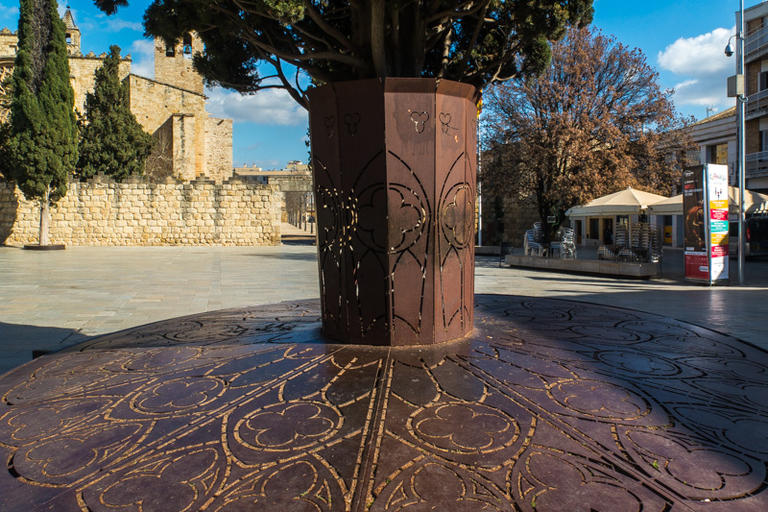
Introduction
This square, which has never been built on, was the physical separation between the monastery and the medieval village. The annual fairs and the weekly market were held in this meeting space, and it was also a strategic defense space. for defense.
From the 17th century onwards, the square was called the Age of the Monks, as it was the place of beating and paying the tithe that the monks collected as feudal lords of the town. Later, the square was also called the Monks' Square or the Fair Square.
Among the trees we find in the square, such as American and native oaks, holm oaks, oaks, laurelslaurels, and cypresses (Cupressus sempervivens), we make special mention of the latter, reaching a height of 22 meters.
Up to 33 cypress trees of different sizes can be counted in the surrounding gardens. This tree, originally from Greece, Turkey and the Middle East, was introduced and spread in the Iberian Peninsula at a very old age. In our country it is always planted, it has never been naturalized.
It is a very long-lived species that can live up to two thousand years (hence the name "evergreens"), and perhaps this is why it is always associated with funerary use.
Its wood is hard, resistant to moisture, is not attacked by worms and is used in carpentry, turning and sculpture. Tradition Moreover, traditionally it also has its that legendary elements such as Noah's Ark and Solomon's temple were made largely of cypress.